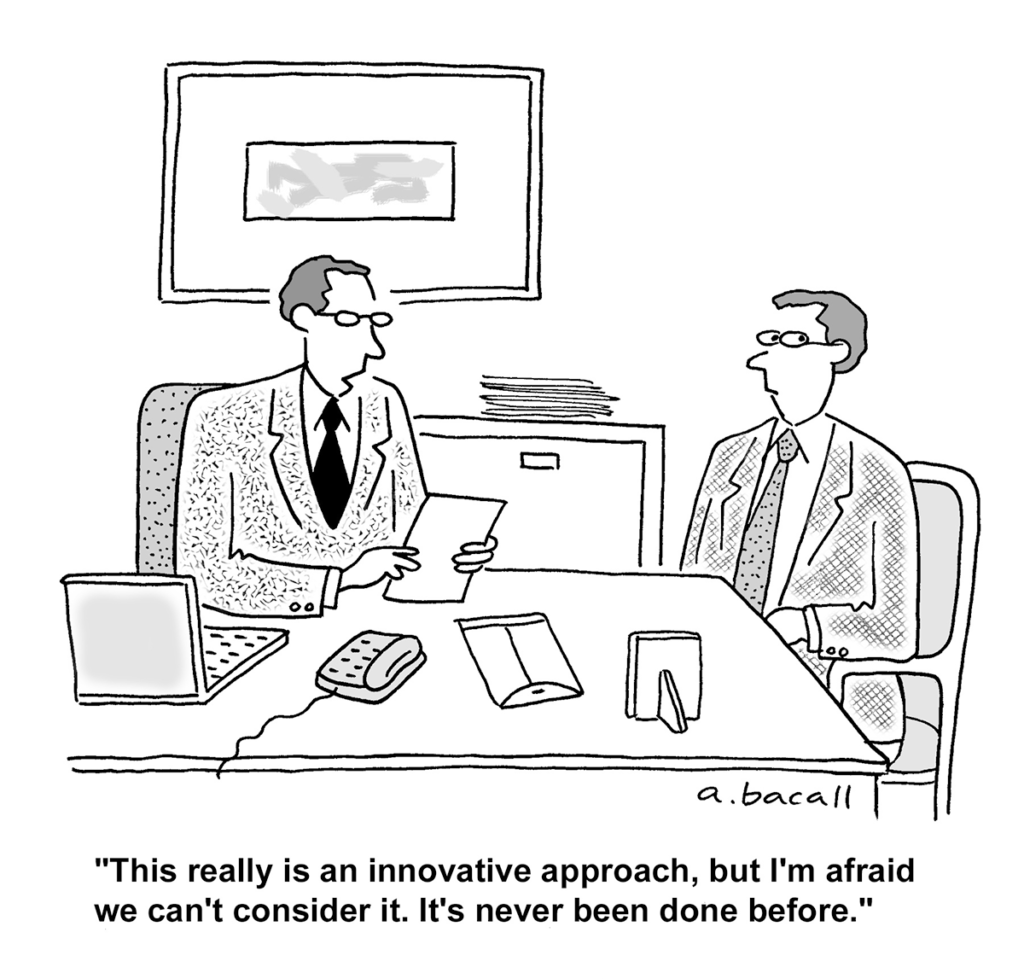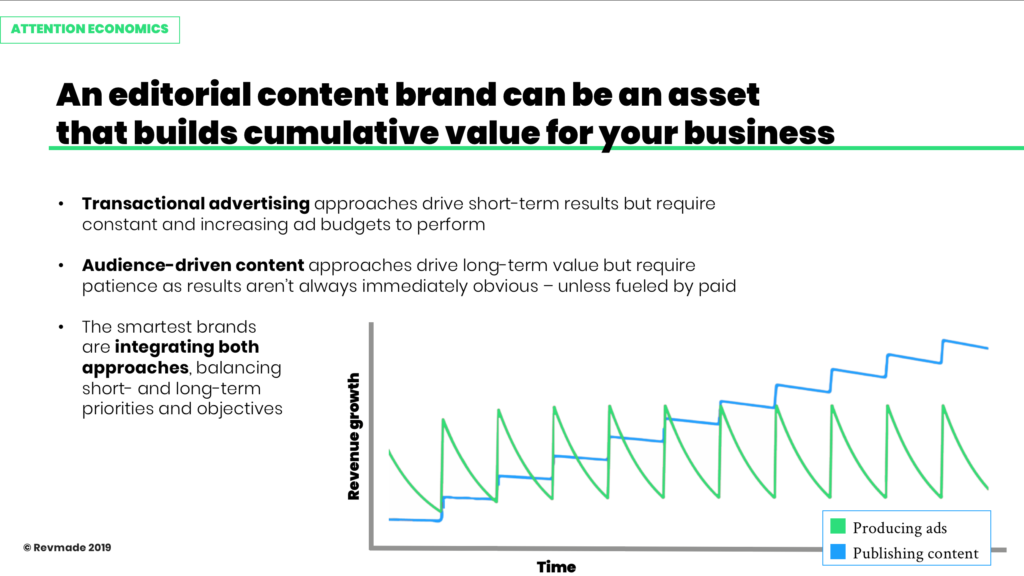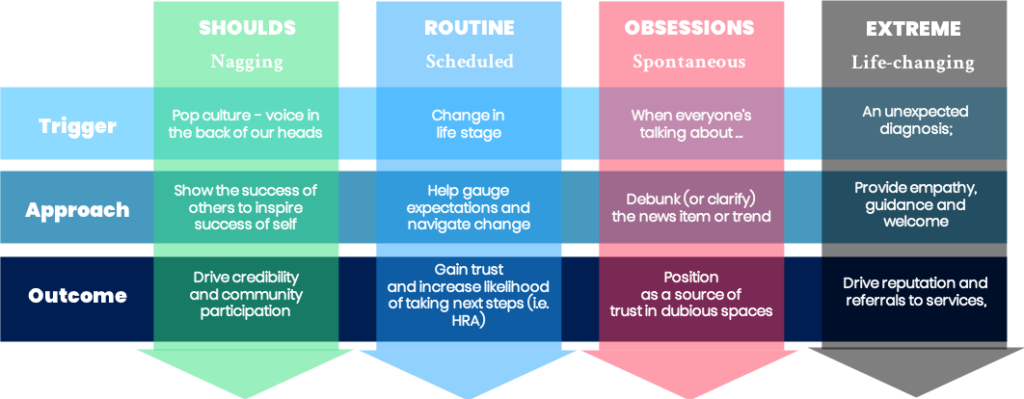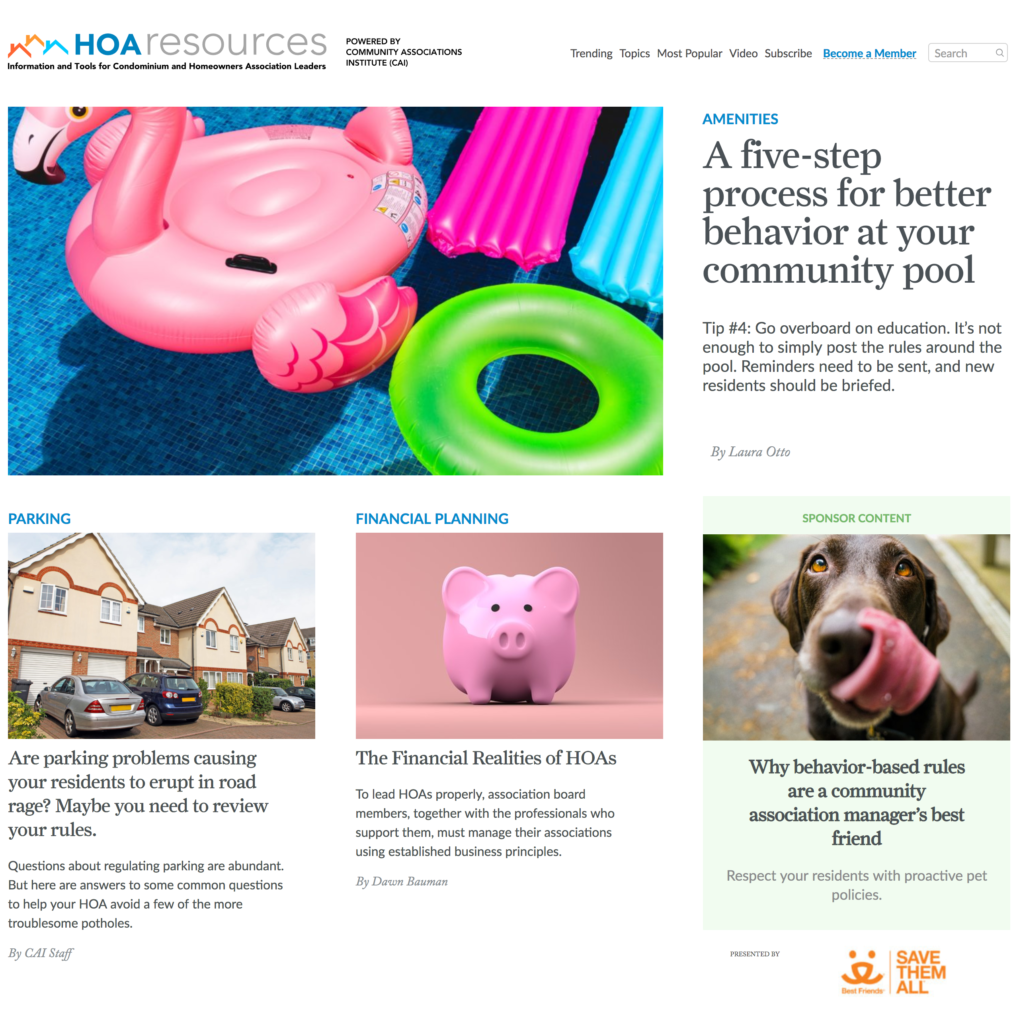Making the business case for content strategy (versus taking a giant leap of faith)
Three steps to getting content initiatives off the groundHow to give a little love to your big idea
If you’re reading this, you know the influence and impact that smart editorial operations have for brands, businesses, and organizations of all stripes.
But if you work for a brand in particular, you also know that personally understanding the power of producing content that serves your target audience isn’t enough – to get a project off the ground, you need to convince your colleagues and stakeholders that it’s the right strategy.
Maybe this looks familiar:

We’re asked about the nuances of making the business case for content more than any other question. Here’s our three-step plan for how to get a productive content strategy conversation going in your own organization:
Step #1: Lay the Foundation of Why Content Works
For some stakeholders, especially those who aren’t as digitally-savvy, you’re going to need to go back to basics. Give them the rundown on how audience attention and habits are shifting, and why that matters. And of course, your audience is only half of the issue – the publishing and advertising landscape is shifting as well.
A few points that you’ll want to focus on:
- There are more channels to consider than ever before, and generally the cost of reaching audiences through rented channels continues to increase
- But, time spent with media overall is increasing and those increases are mostly coming through digital rather than traditional sources like television and print. Meanwhile, there is more competition for mindshare in each channel than ever before.
- This time is often being spent on social platforms, where opportunities arise to use sophisticated targeting to reach audiences in a noisy and competitive space — without breaking your marketing budget
- Because content is the currency of the internet, social targeting tends to perform significantly better when it leverages relevant, interesting content – and that same content can rank in search organically to build a pipeline of interest toward your brand
- Traditional tactics are yielding diminishing returns as advertising noise increases (and consumers have more technology to ignore)
- The role of brands is changing as empowered consumers expect more: Audiences want relationships (read: a value exchange) with brands, not a bombardment of advertising – especially frightfully ineffective banner ads
- Meanwhile, pressure to drive short-term results puts long-term brand-building on the back-burner, often increasing reliance of brands on the publishers and platforms who have invested in relationships with those very same audiences in order to monetize them to brands.
But what if brands could build those relationships directly? What if editorial content could fuel their marketing in order to spark an equal value-exchange between individual and brand? What if a brand could put an editorial property at the center of their marketing ecosystem that served as a platform to launch campaigns from and an epicenter of data collection, engagement and eventual conversion and monetization?

Forward-thinking brands are not only asking “what if”, they’re piloting concepts in marketing that look a lot more like the editorial advertising used to ride along instead of the advertising itself. Planting this seed is essential to making the case. (And it never hurts to mention market leaders who are already capitalizing on this opportunity: Marriott’s Traveler, Northwell’s The Well, and not to mention digital upstarts who are building influence from the ground up in markets they are defining through content.)
Demonstrate to your organization how content can contribute to solving for these emerging challenges—providing an opportunity for meaningful relationships on a direct, cost-effective, and efficient basis that builds cumulative value over the long-run. Inversely, illustrating the risks and opportunity costs associated with not investing in content as an asset to build an audience can strengthen your case.
Step #2: Make the Case for Your Organization’s Success
We believe that every organization’s marketing can significantly benefit from an editorial content approach in their outreach and promotional efforts. But it’s certainly not true that every organization can use any type of content, or publish on any topic, and create credible, valuable relationships with their customers.
There are core questions that you and the other leaders in your organization will need to ask – and answer – before you continue:
- What’s the whitespace in the market?
- Demonstrate growth or a surge in interest around a topic or category relevant to your brand that your organization would want to be associated with. Do you have the expertise to be a voice in the conversation? What could influence in this niche yield?
- What audience problems or interests can your brand help to address?
- Make sure you’re always meeting a need or demand of your target audience, not just creating content for its own sake. Many brands overlook the FAQs they are frequently answering for their customers, and that can be a great starting point. But whether you build from search, social, survey or other sources of data, the central premise of your brand’s editorial publication should be to solve problems and meet unmet needs.
- How will this effort serve your organization’s bottom line?
- The strategy must include why the awareness, engagement, leads, etc. from this subset will improve business outcomes. Base projections on assumptions and map the key touchpoints. Demonstrate how you’ll show value, then demonstrate the value. Setting expectations and framing the discussion is essential.
- What resources can you deploy to make this an impactful strategy?
- Which teams will be involved? Who can contribute content? What tech/development input will be required? This can be the biggest roadblock, so eliminating the objection upfront in your pitch is critical.
- What is your vision for the 3-5 years after launch?
- Show how this editorial operation isn’t just a campaign, it’s reinventing your approach to communications. Show the path first to sustainability and then to profitability.
Case Study: The Well
At Revmade we had the opportunity to launch The Well in collaboration with Northwell Health — an editorial platform that its communities, clients, and customers engage with before a health event. In this project, we answered and executed on these same questions – here’s a sort of summary of where we netted out:
What’s the whitespace in the market?
Despite more resources existing for our key audience – women who act as the Chief Medical Officers of their families – than ever before, her stress and dissatisfaction with health resources has never been higher, as media players looked to monetize her anxiety and health systems tended to downplay it. Health media is riddled with slideshows and clickbait, generic listicles and sanitized stock photos. With The Well, we wanted to do things differently by addressing the difficult topic of health in an honest and authentic way. Instead of organizing our editorial around broad themes, we identified the most-stressful moments women faced in their health and wellness journeys and designed content aimed at walking them through those moments via been-there-done-that-1st-person narratives, photo essays and advice columns.
What audience problems or interests can your brand help to address?
In our audience research (across call center data, search trends, social listening themes, and audience surveys) we observed “flares” in anxious activity around certain moments people experience throughout their daily lives related to their health. We worked with Northwell to develop a strategy that would orient its content precisely around these moments—to reach customers when it made sense for them. Our goal was to provide an explanatory layer and stress-reducing next step for as many of these flares or moments as possible.

How will this effort serve your organization’s bottom line?
With content, we’re investing in the long game. We use content to power our media spend and CRM efforts to build an audience database. This data pipeline becomes the undercurrent that supports the future of the business—with insights that we can use to learn more about our patient population, and serve them relevant services and products that both meet their needs and also serve our bottom line.
What resources can you deploy to make this an impactful strategy?
The team that produces The Well is a multidisciplinary outfit, spanning editorial, marketing, strategy, and design talents. Northwell’s medical experts contribute their expertise. And freelancers are leveraged to stay close to the community and round out content development efforts. The Well’s success hinges on Northwell putting this editorial effort at the center of their communications efforts—treating teams as collaborators, not as individual silos.
What is your vision for the 3-5 years after launch?
Most marketing organizations are built for campaigns, not crusades. This drives short-term thinking, renting space on other publishers’ websites. We’re after long-term thinking and owning a space — creating best-in-class editorial experiences that rival a given market’s leading publications. We’re not only trying to iterate and monetize. We’re trying to drive brand engagement and trust.
Step #3: Start Small: Ask For Permission to do a Pilot
At this point, you’ve explained to your colleagues why content is important. You’ve answered the questions that will inform your approach to this new strategy. But painting a vision of success isn’t enough—many times you need to show a tangible proof of concept. Often we find the most effective pitches offer pilot programs as a starting point: Opportunities to make a modest investment in content that can make a splash and build momentum for a future editorial expansion.
This is the approach we took recently with the Community Associations Institute (CAI)—the PR, membership, and advocacy arm of the HOA community. Our goal: provide resources to homeowners and HOA board members who were solving problems and settling disputes in neighborhoods across the country. The premise: have experts at CAI and in their network answer questions people were Googling every day, building trust, influence, and community engagement.
What started as a regular feature idea is growing into a flagship resource center that has shifted the team’s approach to communications: Instead of buying from and begging the media, we created a media-company-like magnet for the HOA industry to engage with, interact on, and respond to. The digital strategy enables the PR/marketing team to reach its goals of reputation management, prospecting for new members and driving membership growth — all while generating new revenue through advertising.

What exists today didn’t spring up overnight — CAI started small, with manageable content efforts that could test the water and demonstrate the validity of their approach. Take its Q&A series for example, touching on topics such as “How can I keep our community pool water safe?” For their constituents, these are the helpful insights that make an organization like CAI invaluable, and done without expending a ton of resources or hours in the process.
Your editorial effort won’t look exactly like this. Every organization needs an approach tailored to their audience and business objectives. But if you follow this framework, you’ll be on the right track, with a strategy that will set you — and your organization — up for success in the years to come. R
Subscribe
Get our weekly newsletter for tips on how to drive better content marketing performance.
For a regular stream of ideas, research and links we find helpful. And of course, to say hi!
